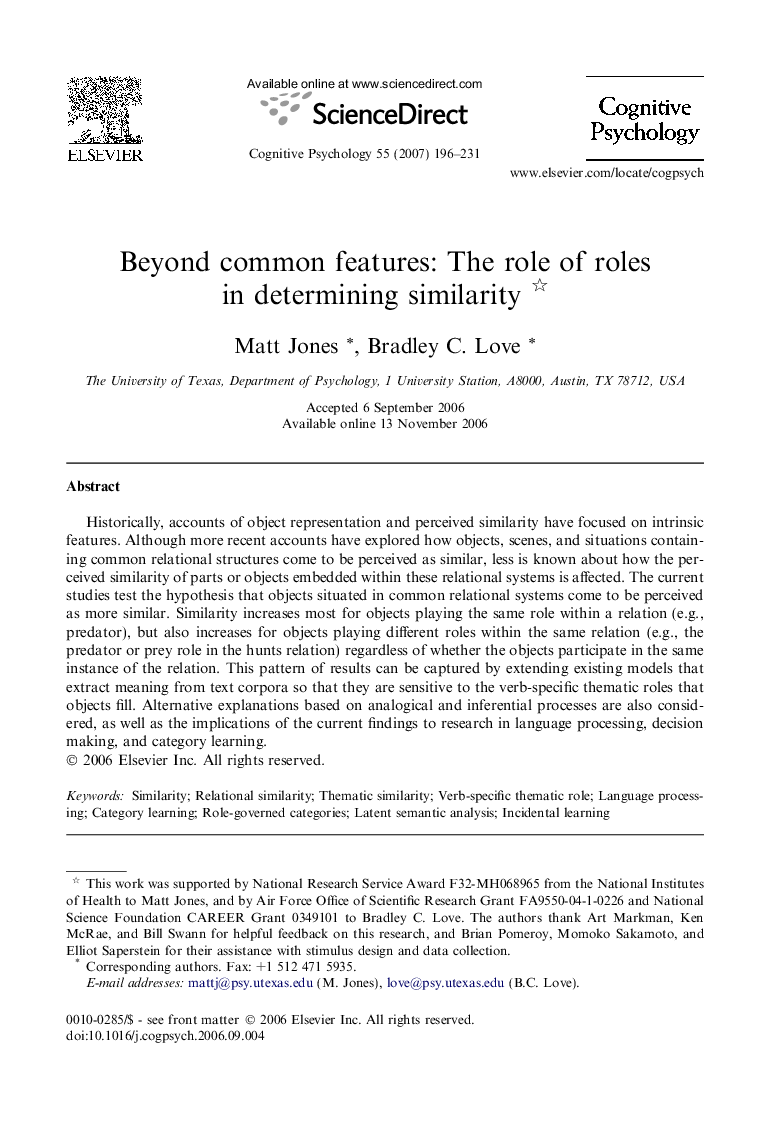| Article ID | Journal | Published Year | Pages | File Type |
|---|---|---|---|---|
| 917075 | Cognitive Psychology | 2007 | 36 Pages |
Historically, accounts of object representation and perceived similarity have focused on intrinsic features. Although more recent accounts have explored how objects, scenes, and situations containing common relational structures come to be perceived as similar, less is known about how the perceived similarity of parts or objects embedded within these relational systems is affected. The current studies test the hypothesis that objects situated in common relational systems come to be perceived as more similar. Similarity increases most for objects playing the same role within a relation (e.g., predator), but also increases for objects playing different roles within the same relation (e.g., the predator or prey role in the hunts relation) regardless of whether the objects participate in the same instance of the relation. This pattern of results can be captured by extending existing models that extract meaning from text corpora so that they are sensitive to the verb-specific thematic roles that objects fill. Alternative explanations based on analogical and inferential processes are also considered, as well as the implications of the current findings to research in language processing, decision making, and category learning.
